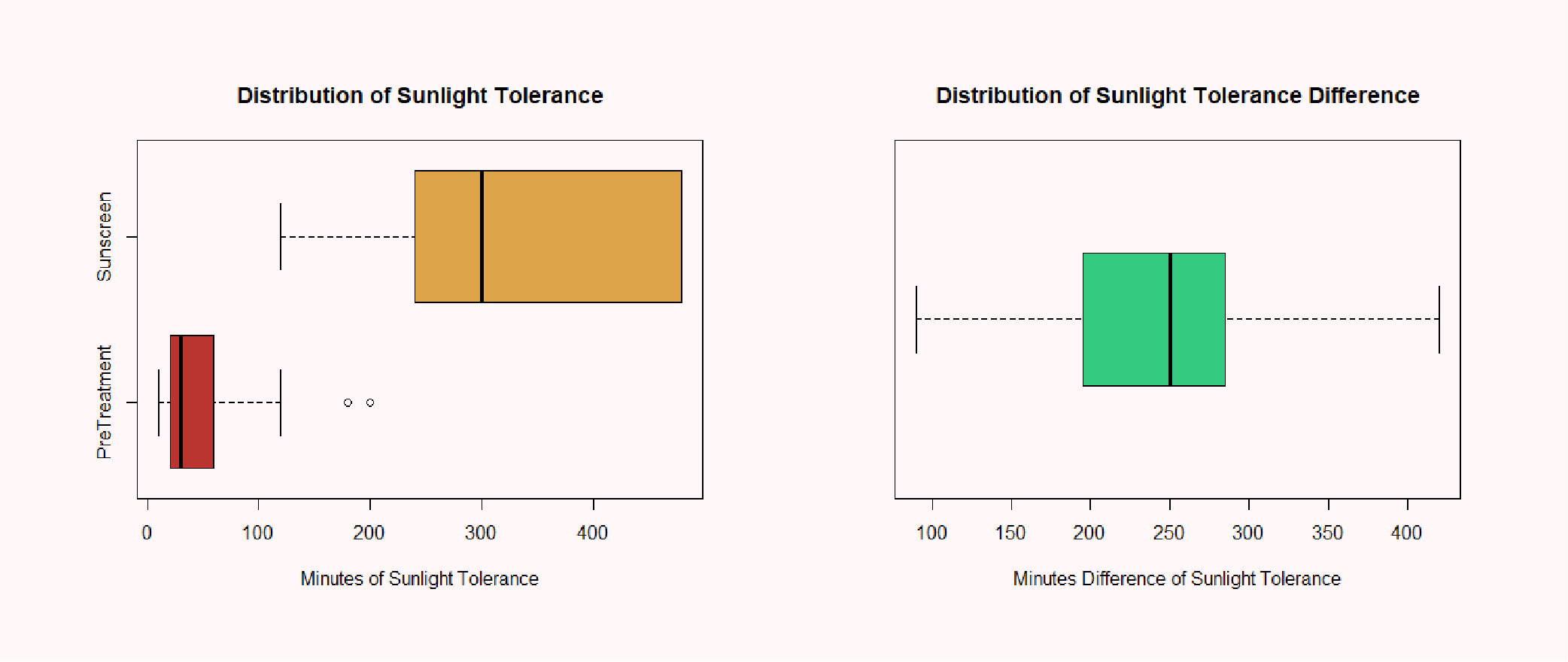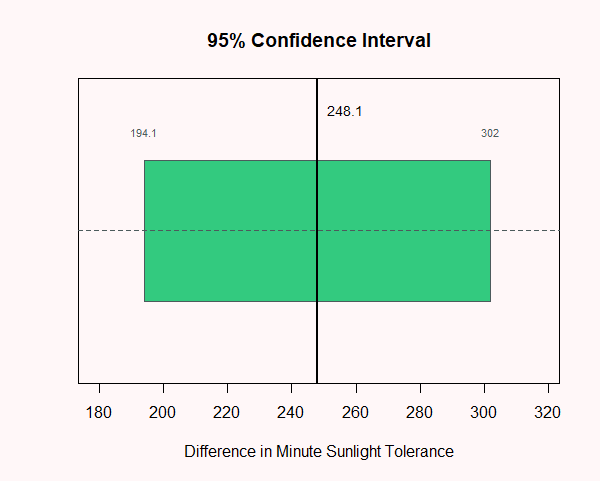
Sunscreen Effectiveness
I analyze study results of skin tolerance before and after a sunscreen treatment for 13 patients, evaluating any evidence related to a difference in sunlight tolerance of the groups.
Skin care is increasingly more important as climate change erodes the atmosphere and the protective ozone layer. Hash sun rays also lead to skin cancer and other dermatological conditions. Therefore, a study was conducted to evaluate the skin tolerance before and with a sunscreen treatment.
13 patients were studied and their sunlight tolerance in minutes were recorded for the two groups of interest. The goal is to evaluate whatever evidence we find related to any difference in sunlight tolerance of the groups.
Graphical Analysis
The dataset is clearly paired. We have patients for whom two measurements are taken. We care about the relationship of these measurements specific to each patient. This points to the need to take the difference of such measurements. However, let's look at the distribution of the data before doing so.
We can see that neither group exhibits normality nor equal variance. Fortunately, the difference of our measurements of interest do result in an approximately normal distribution. In fact, a Shapiro-Wilk's test confirms with a large p-value that we should assume normality.

Another nice component of taking this difference is that we've adjusted our interest from two groups of interest to one, therefore simplifying the statistical test we'll employ.
Statistical Analysis
What we're looking for now is statistical evidence that the difference in sunlight tolerance between these two groups. We'll perform a student t test on these difference values. Below is the hypothesis test we'll conduct:

We'll use subscripts 't' to identify our sunscreen 'treatment' group and 'n' to identify our 'no-treatment' group. 'D' will be the difference between our population parameters, assuming it to be zero (no difference in sunlight tolerance) and execute a two-tailed, student t test on the single population.

Because we performed no transformations, we can interpret the results with ease. We find a significant p-value, leading us to conclude there to be conclusive evidence that the difference in sunlight tolerance is indeed different between the two treatment groups. Our difference estimate further indicates that the sunscreen treatment group experiences far superior sunlight tolerance by an average of 248 minutes more than the pre-treatment group.

Our confidence interval states with 95% certainty that the true population difference in minutes of sunlight tolerance is as low as 194 minutes to as high as 302 minutes more for the sunscreen treatment group. The high low value clearly explains the strong p-value we received from our student t test.
Assumptions
While we addressed several of the conditions above, we'll detail them explicitly below.
The independence condition wasn't met with our two treatment groups because the data was paired. We solved this issue by taking the difference of their sunlight tolerance measurements.
The difference in minutes of sunlight tolerance turned out to be normally distributed, thus meeting this condition for the student t test.
Lastly, the assumption of equal variance could be disregarded as we turned a two-population study into a single population by taking the difference.
Scope of Inference
The scope of inference is a little suspect given we don't know much about the test subjects. We're unclear as to the skin types of the patients, where they live geographically, and the exact exposure to sunlight.
However, the strength of our results, and the designed experiment, mean we can conclude causation, that sunscreen treatment will significantly increase the duration of one's ability to tolerate sunlight exposure. This we can say with a good level of confidence can be inferred upon most populations of humans as a general rule.
Our confidence interval cannot be inferred as a general rule, however. The uncertainties about the test subjects leave us unable to specify the length of time one is likely to tolerate exposure to sunlight with the sunscreen treatment.
